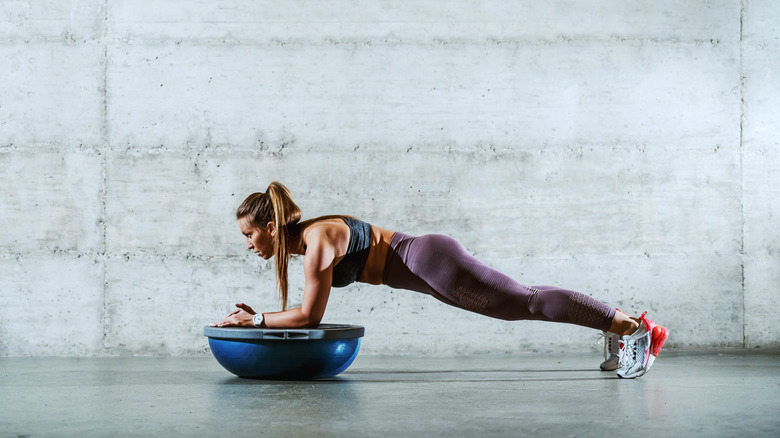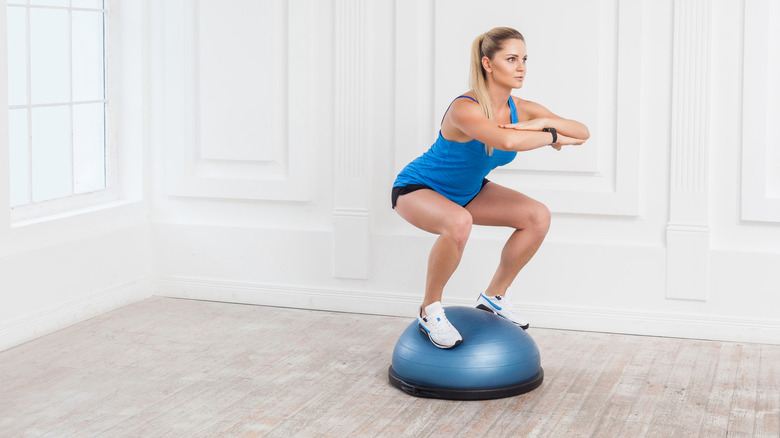The One Move You Shouldn't Do On A BOSU Ball
A stroll through any gym's equipment section — or the fitness section of a sports supply store — will usually introduce you to a few things you've never seen before. There are many different kinds of weights and resistance bands, and even PVC pipes used for things only the trainers understand. Hidden in among all those odd pieces of equipment is something else you might be wondering how to use. That thing would be the BOSU ball. Despite its name, the BOSU ball isn't technically a ball. It's a device with a flat bottom and a top that rounds up. Many of them look almost exactly like someone cut off part of an exercise ball and glued the open side to a flat base.
While this device might look a little odd, it's great for certain exercises. Women's Health lists several, most of which use the BOSU to challenge your upper body and to change the angle of exercises like hip bridges and planks. But as their line-up shows — and an article on The Healthy confirms — that there's one thing you should never do with a BOSU ball.
What you shouldn't do on a BOSU ball
It might seem counterintuitive to tell people not to stand on a BOSU ball. After all, they are sometimes called BOSU balance trainers. And, when used properly, they can work to help people with balance issues, as described on BOSU's website. But as personal trainer and nurse practitioner Lindsey Wismer explained to The Healthy, people take a big risk when they stand on a BOSU ball. And they take an even bigger risk when they perform exercises like squats. "Unless you're a top athlete you'll likely have worse form," she told the publication. She specifically stated that your knees and ankles can roll out of position. These joints are often sites of sports or fitness-related injuries.
Squats may seem simple enough. But as Bodybuilding explains, the form is more complicated than it appears. Foot position and stance width are both important, but so is the angle and placement of the torso. And as HuffPost outlines, the way you move can shift strain from the knees to the hips or vice versa. Trying to do all this on a rounded surface increases the risk of injury. Stick with traditional flat-ground squats and use the BOSU ball as Women's Health demonstrated, for upper body and hip adjustments.


